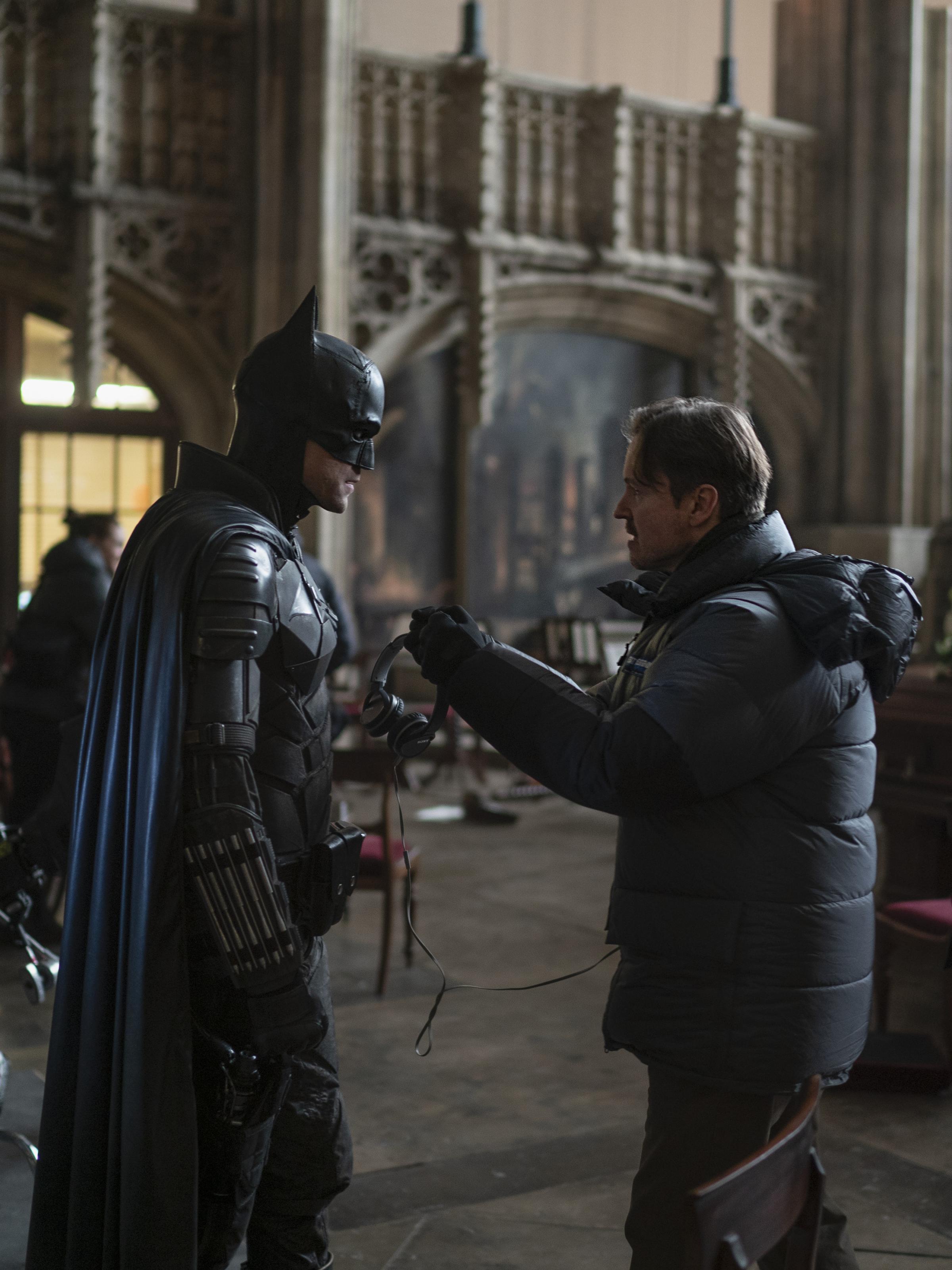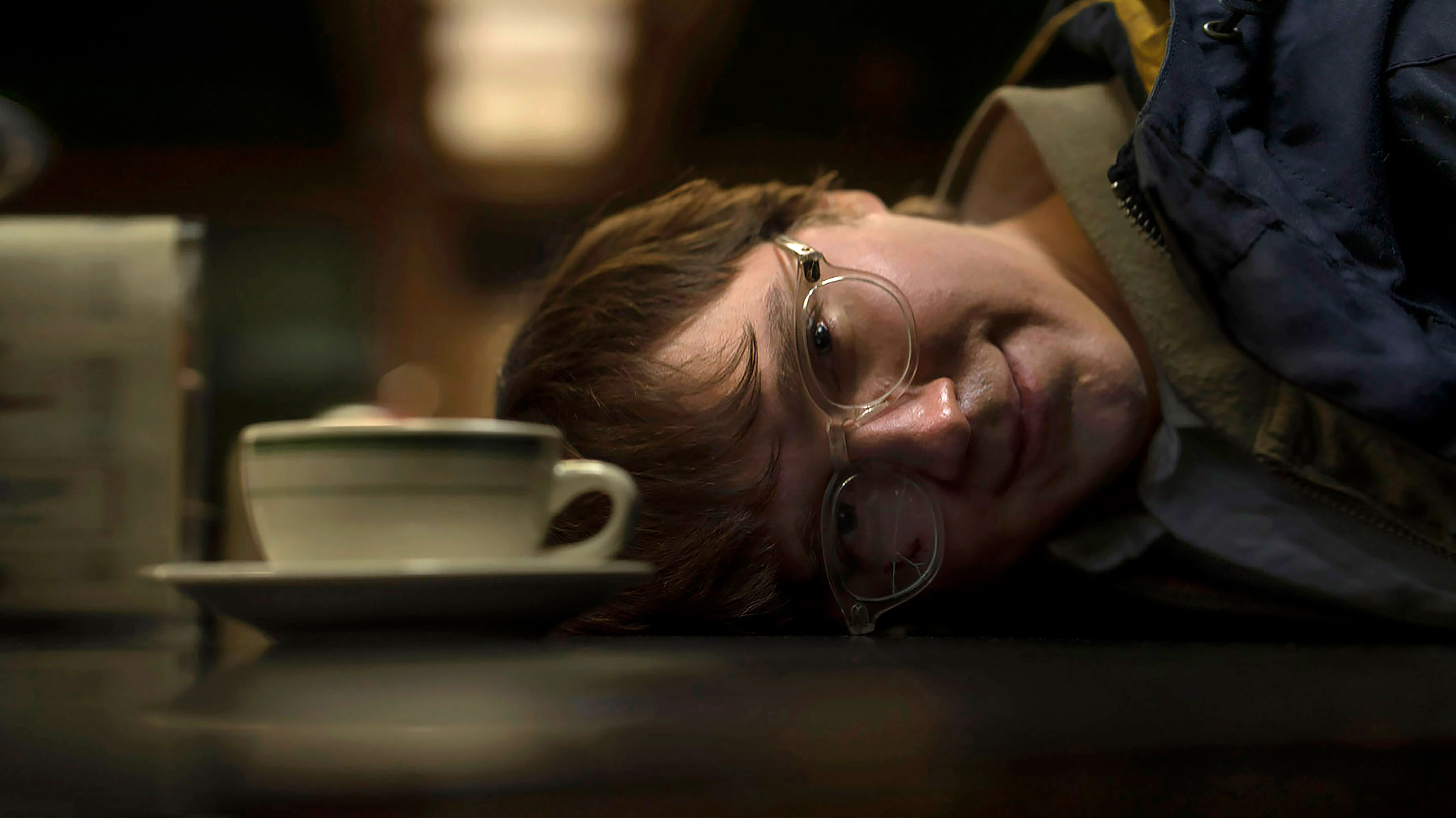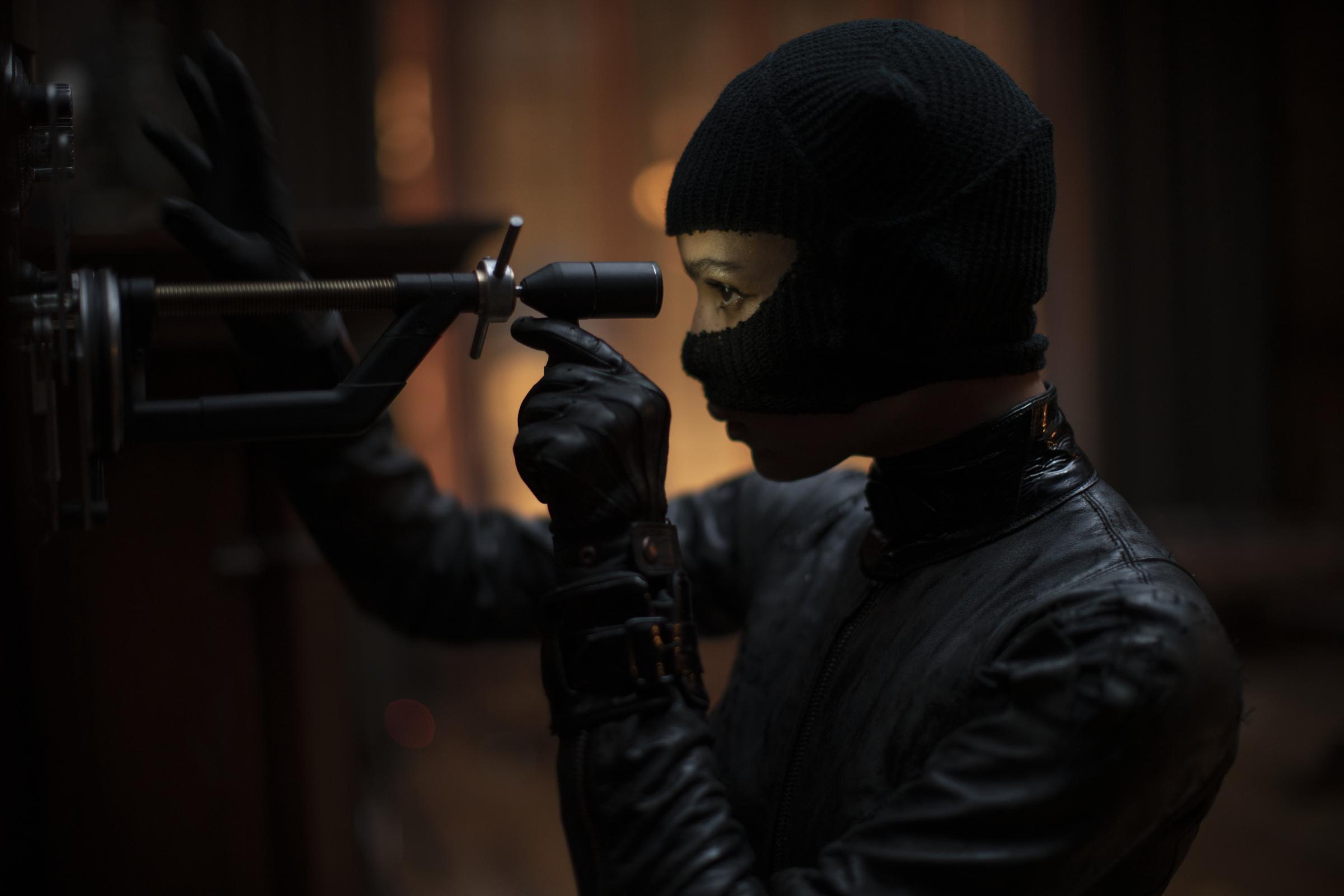Early in The Batman, our hero strides into a train station where a group of face-painted hooligans are harassing a citizen of Gotham. He starts punching their ringleader. Maybe too many times. And a little too hard. Is he enjoying it? The man Batman has saved doesn’t say thank you. Instead, he crawls backward, begging for his life. Batman strikes fear in the hearts of villains, but he strikes fear in the hearts of victims, too.
“I wanted to play on this idea that Batman is going to unleash on these guys, and there’s a part of you that can’t wait to see it,” says director Matt Reeves, whose superhero reboot hits theaters March 4. “You go to a Batman movie to see that moment. And then you see it’s having a toxic effect. It makes you get a little unsettled.”
The Batman, starring Robert Pattinson, isn’t exactly a horror film, but it revels in discomfiting its audience. Though Reeves started working on the script with Peter Craig in 2017, it manages to capture our current feelings of despair and isolation—a sign that the discontent that permeates the movie has been brewing for a while. Christopher Nolan’s Dark Knight trilogy told the story of a superhero desperate to help his city eradicate corruption so that it would no longer need someone to watch over it. Reeves’ version knows a bright future is not possible. That’s an apt, if grim, observation at a time when a pandemic, increased anxiety about global warming, and a war in Europe have contributed to a pervasive sense of doom.
In superhero films, the line between good and evil is usually bright. Reeves’ new film is cloaked in realism and a moral muddiness that echoes thrillers like Se7en and neo-noirs like Chinatown. Batman is hunting a serial killer called the Riddler. Played by Paul Dano, he’s a far cry from Jim Carrey’s green-suited slapstick character from 1995’s Batman Forever. Dano’s Riddler hides behind an army-green mask and leaves puzzles for the Caped Crusader on mutilated corpses. Like Batman, he targets Gotham’s corrupt politicians and gangsters. Unlike Batman, he’s willing to kill, and—no less frightening—has leveraged social media to amass a violent, fringe following. “The far-out parts of internet culture, I found that scary,” says Dano. “The film is more terrifying because of its contact with reality.”
Reeves, whose previous work includes the monster movie Cloverfield and installments in the Planet of the Apes franchise, aims to bring a humanist perspective to genre filmmaking. And in The Batman, Reeves empathizes with his villain and criticizes his hero. Superhero movies “can be a reductive, iconic genre,” he says. “I wanted to create a movie with shades of gray.”
Read the Review: The Batman Is Dark, Real Dark—Or So It Wants Us to Think
The Batman Is Dark, Real Dark—Or So It Wants Us to Think

Pattinson is our eighth live-action Batman on the silver screen, and a far cry from the whiz-bang-pow TV version from the 1960s. Tim Burton’s film adaptations were dark, but not grim. It was Nolan who set the stage for nearly two decades of dark DC Comics films, drawing heavily from somber comic books with story lines about psychological torture. If Warner Bros. briefly strayed from the Nolan playbook by hiring Marvel Studios veteran Joss Whedon to punch up the dialogue in Justice League, The Batman swings back toward grit.
Inevitably, critics will compare The Batman to Nolan’s films. But Reeves distinguishes his vision from what came before. This moody, atmospheric movie is uninterested in Batman’s gadgets, and the car-chase scene, while terrific, is purposefully grounded: the Batmobile weaves down a crowded highway, rather than taking flight. The film cracks only a few jokes, mostly at Batman’s expense.
Christian Bale excelled at playing Batman’s two sides: the charming, if smarmy, Bruce Wayne (harkening to his American Psycho days) and the brooding bat. Reeves asks Pattinson to play to his own strengths. This Bruce has no playboy alter ego and would prefer to stay home and journal. When he is obliged to leave his manse without a mask, the erstwhile Twilight star sulks beneath his bangs. And Reeves spares viewers another scene of Bruce’s parents’ death, instead alluding to a tragic past through his mournful glances at rich boys toddling around Gotham.
His Batman is also not as confident: early in the film, Bruce admits he’s been patrolling the streets of Gotham for two years to keep the city safe, and if anything, crime has gotten worse, not better. His decision to strike fear into his enemies by dressing up as a bat, may, in fact, be inspiring villains to don masks of their own and terrorize the public. “Most films start as an origin story. He loses his parents in this violent way. He masters himself, and then dedicates himself to this mission,” says Reeves. “I wanted him to be human and flailing and struggling.”
Dano’s Riddler is a villain in the thrall of the crimefighter. “There can be no Riddler without the Batman,” says Dano. Reeves recommended Dano read Mindhunter, about the first FBI team to hunt serial killers. (The actor had to take the book to coffee shops to read so he didn’t have to keep it by his bedside: “I get squeamish.”)
Many of Batman’s most iconic nemeses have been scene stealers. Heath Ledger and Joaquin Phoenix won Oscars with their respective turns as the Joker. Tom Hardy’s hulking figure and muffled voice as Bane defines The Dark Knight Rises—for better or worse. The Riddler, by contrast, is a specter: he doesn’t show his face for most of the film. And when he does, he’s a human with a reason for his anger and a meticulous moral code.

Every character in Reeves’ film has a backstory, usually a tragic one. And Reeves seems much more interested in the systemic issues that created Gotham’s many villains than his predecessors ever were. For instance, Gotham is littered with orphans, including Selina Kyle (Zoë Kravitz), also known as Catwoman. Unlike all the other abandoned children in Gotham, Bruce Wayne was raised by a loving butler in a mansion. Nolan briefly alludes to Batman’s privilege in The Dark Knight with a telling crack about a Batman imitator wearing “hockey pads” instead of Kevlar. And Justice League largely ignores Batman’s wealth.
But in The Batman, Selina calls out Bruce on his myopic view of Gotham afforded by his status as a white man and the comfort of his inheritance. “He’s completely sheltered and has this moral superiority,” Reeves says. “He encounters her in the underworld and assumes she’s morally corrupt. And he’s entirely wrong about her because he didn’t have to struggle.”
Reeves’ Gotham is notably more diverse than past iterations, and as a Black woman, Selina’s challenge to Bruce carries greater weight. Reeves doesn’t hit you over the head with this commentary but quietly shows how the characters’ backgrounds might affect their relationships. This movie is, at its heart, a love story about two people from different worlds trying to learn to trust each other—even as we, the audience, can’t decide whether either should be trusted.

For a movie called The Batman, the film offers a number of different perspectives. In the very first scene, Reeves plays with the camera’s point of view: we see a rich family in their home, shot through binoculars. Who is spying on this family? Is it someone plotting to kill the Wayne family in the past? Is it Batman watching a corrupt Gotham politician in the present? Is the Riddler targeting a victim? Reeves deploys the ambiguous shot again later in the film, this time trained on Selina alone in her apartment. Watching her feels like a violation. “I loved this Hitchcockian point-of-view storytelling where you use the camera to implicate the viewer,” says Reeves. “The viewer is now the voyeur.”
These aren’t just tricks of the camera. Reeves has a bigger question on his mind: If Batman stalks the city calling himself “Vengeance,” what really differentiates him from the vengeful villains he’s hunting down? The morality of Nolan’s Batman was never in question—only whether Gotham perceived him as a do-gooder or a madman. But this Batman has to make the decision to be good.
Because of their popularity and the potency of their symbolism, superhero movies tend to get flattened, and misinterpreted in the process. Ledger’s Joker, who has a truly frightening agenda, has been boiled down an image and a caption: “Some men just want to watch the world burn.” A Marvel joke—“Thanos was right”—devolves from a radical take on environmentalism to an ironic quote on a coffee mug.
Batman is particularly vulnerable to this type of simplification. In the comics, he’s been a pure hero and a borderline villain. “There’s a version of glorifying a kind of brutality of Batman that’s fascist,” says Reeves. “You could see that meme. And then there are other portrayals where you could see that he’s struggling in this very human way.” By constantly changing perspective and forcing us to consider Batman’s exploits from different points of view, Reeves insists on a more complicated protagonist who has to reflect on what, exactly, he wants to symbolize: fear or hope. “I wanted him to be forced to have an awakening,” he says, “and confront what he’s doing.”
More Must-Reads from TIME
- Donald Trump Is TIME's 2024 Person of the Year
- Why We Chose Trump as Person of the Year
- Is Intermittent Fasting Good or Bad for You?
- The 100 Must-Read Books of 2024
- The 20 Best Christmas TV Episodes
- Column: If Optimism Feels Ridiculous Now, Try Hope
- The Future of Climate Action Is Trade Policy
- Merle Bombardieri Is Helping People Make the Baby Decision
Write to Eliana Dockterman at eliana.dockterman@time.com